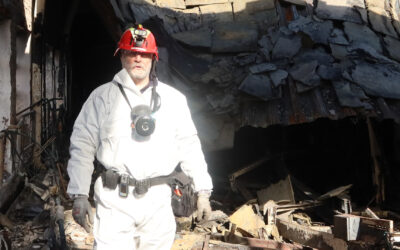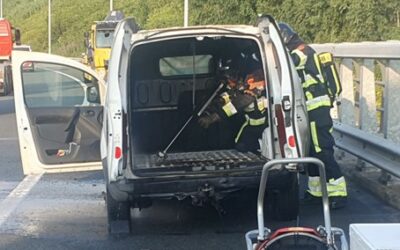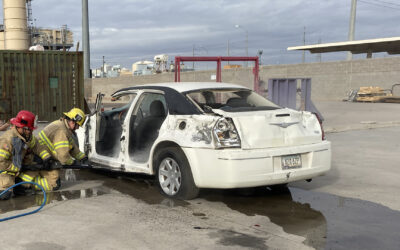As the global transition to electric vehicles gathers pace, some key researcher and real-life case studies suggest that the Cold Cut Cobra firefighting tool is better for tackling EV fires than traditional methods.
It is very rare for fires to break out in the lithium-ion batteries that power electric vehicles. However, when they do occur, they present unique and significant challenges due to their high energy density, susceptibility to thermal runaway, and complex suppression requirements.
But in recent years, a series of studies and real-life case studies show that Cold Cut Cobra system stands out as a cutting-edge firefighting tool, particularly in the context of lithium-ion battery fires.

Research shows Cobra’s many key benefits
1. Efficient cooling and fire suppression
The Cobra system’s ultra-high-pressure water mist technology enables rapid and effective cooling of overheated battery cells. By initiating an internal flow of water, cooling of the affected area can be reached, preventing propagation – the chain reaction from a thermal runaway in one cell to another.
The two reports find that this dual-action approach makes Cobra highly effective in extinguishing lithium-ion battery fires, which are notoriously difficult to control with traditional methods.
(Sources: NIPV, 2024; Zhang et al., 2022)
2. Minimal water usage and environmental considerations
Cobra has much less impact on the environment than traditional firefighting techniques.
Traditional firefighting methods for battery fires often involve large volumes of water, which can lead to run-off contamination and cause harm to the surrounding environment and buildings. Additionally, these methods can require extended intervention times, using large amounts of water over a prolonged period.
By contrast, the Cobra extinguisher uses ultra-high pressure to atomize water into fine particles, ensuring maximum cooling and suppression efficiency but with minimal water usage. This not only reduces overall water consumption but also significantly shortens intervention times compared to conventional methods, such as submerging a vehicle in a water-filled container or spraying water on the outside of the battery pack – an approach as ineffective as spraying water onto the roof of a burning house while the fire rages inside
This significantly reduces the ecological impact of firefighting operations and minimizes collateral damage to property.
(Sources: NIPV, 2024; MSB, 2024)
3. Enhanced safety for firefighters
Safety is paramount when dealing with high-energy fires, such as those involving EV batteries. The Cobra extinguisher allows responders to operate in a safer way by enabling firefighting from a distance, reducing exposure to intense heat, toxic fumes, and the risk of battery explosions.
This method not only prioritises firefighter safety but also ensures that extinguishing efforts remain under controlled conditions. Using a protection branch further enhances the safety of the Cobra operator, providing an additional safeguard when tackling challenging fire scenarios.
(Sources: MSB, 2024; Bisschop et al., 2020)
4. Penetration of battery enclosures
One of Cobra’s most distinctive features is its ability to penetrate sealed or reinforced enclosures, such as the metal casings of EV battery packs. The system uses a combination of abrasive material and high-pressure water to create small openings in the casing. This enables the extinguishing agent to directly target internal hot spots or overheating modules, bypassing external barriers that might otherwise prevent effective suppression. This targeted approach is particularly valuable for addressing hot spots in the densely packed structures of lithium-ion battery modules.
(Sources: Willstrand et al., 2019; NIPV, 2024)
5. Versatility for different types of fires
While highly effective for lithium-ion battery fires, the Cobra system’s design also allows it to address a wide range of fire types, including structural, hidden and industrial fires. Its ability to adapt to different scenarios enhances its utility for firefighting teams and makes it a versatile investment for emergency services.
(Sources: Zhang et al., 2022; MSB, 2024)
6. Less risk of reignition
Lithium-ion batteries are prone to reignition due to residual heat and energy trapped within cells, even after the visible flames are extinguished. The Cobra extinguisher mitigates this risk by cooling cells to sub-critical temperatures, interrupting the conditions necessary for reignition. This makes it particularly valuable in scenarios where repeated flare-ups are a common challenge.
(Sources: Bisschop et al., 2020; Willstrand et al., 2019)
7. Ease of Deployment
The Cobra system is compact and relatively easy to deploy, making it suitable for a variety of emergency contexts. Its mobility and straightforward operation allow for quick response times, which are critical in controlling fires before they escalate further.
(Source: MSB, 2024)
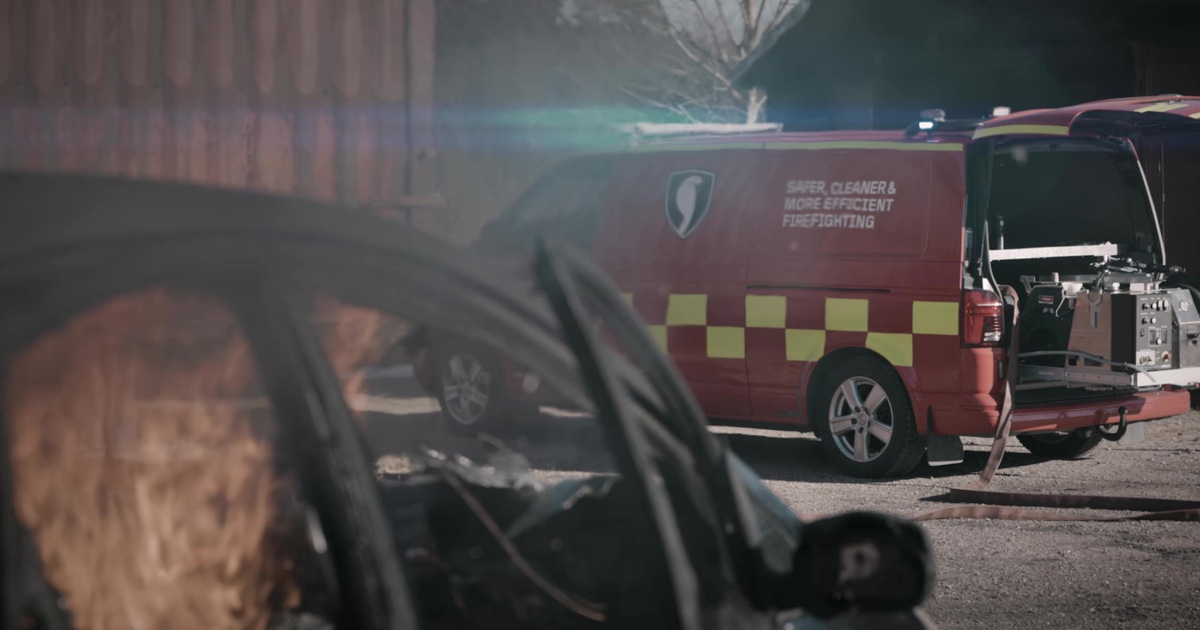
Real-life incidents support the research
Most importantly, these strong research findings are supported by real-life examples.
A fire in Germany in 2022 involved two cars, and spread to the carport and house. While the voluntary fire service dealt with the fires quite easily, one of the cars proved to be problematic. They initially used great amounts of water and foam before being informed by the car’s owner that it was an electric vehicle. Ruling out the costly solution of placing the car in a water-filled container, the local fire service borrowed a Cobra tool from the neighbouring district, which they then used to destroy any remaining cells with charge, enabling them to make the battery safe before they left the scene.
In the Czech Republic in 2023, an EV fire broke out just before midnight in the traction battery of a Jaguar i-Pace, which was parked on an underground floor and connected to a charging station. It led to the chassis exploding, with a lot of smoke.
The charging rectifier was manually disconnected, and firefighters set up a transport line, deploying two hoses. There was zero visibility, so thermal imaging cameras were required. Efforts to disconnect the building’s electricity were thwarted by burning vehicles, and the command team decided not to cut power to keep the elevators working, eventually helping with smoke removal. Reinforcements quickly arrived, and three hoses and Cobra were deployed, with a Hazmat truck and CBRN lab also on scene to measure and sample air quality and toxins.
A container for extinguishing EVs was prepared by 00:32, and by 01:13, the flames were extinguished. The electric car was raised to access the batteries and loaded onto transport carts.
These are just a few of the many real incidents where Cold Cut Cobra has been used successfully.
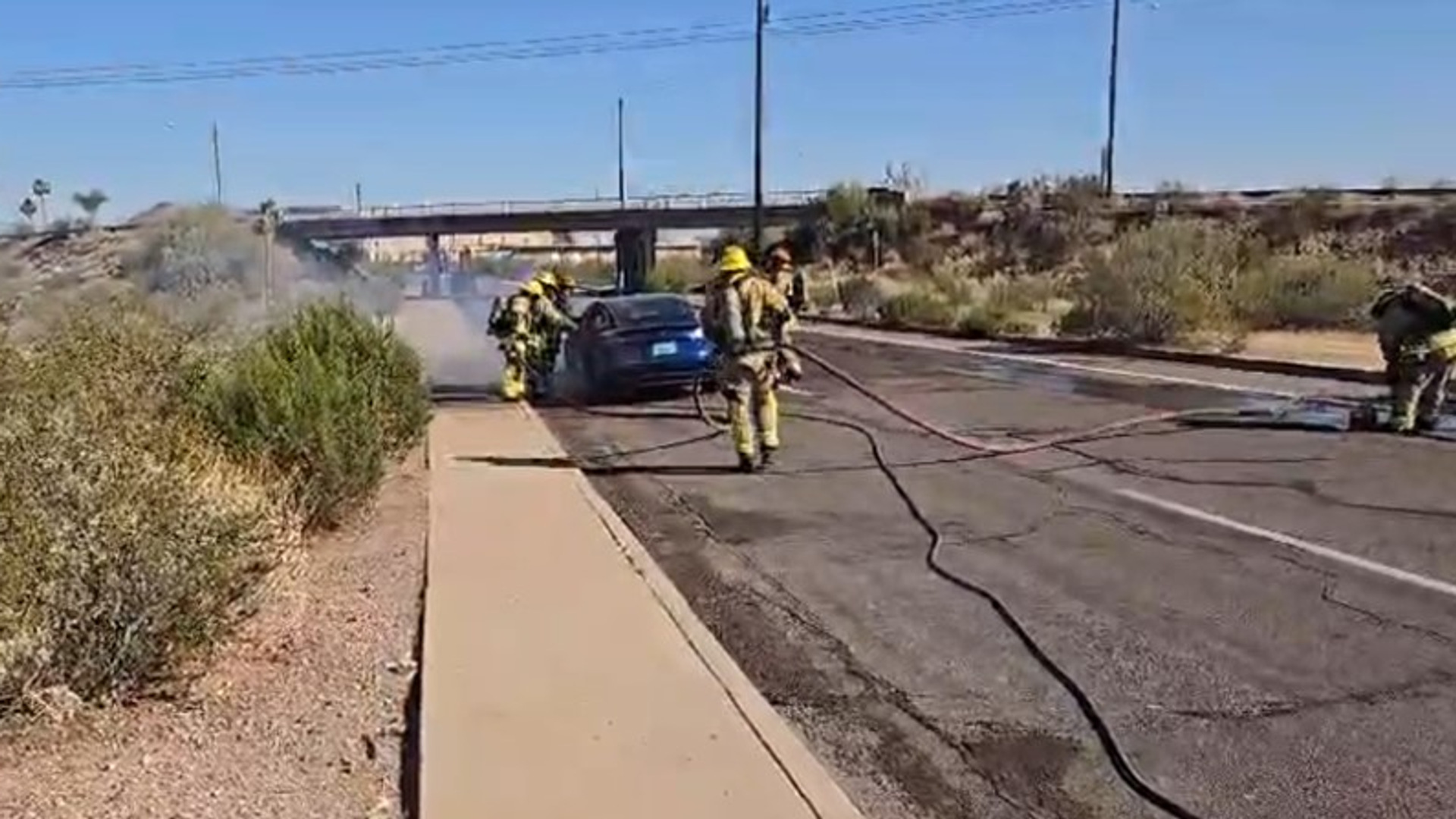
Conclusion
Both research and real-life case studies show that the Cobra fire extinguisher represents a significant advancement in firefighting technology, particularly for dealing with lithium-ion battery fires in electric vehicles. Its unique combination of efficiency, safety, environmental consideration, and versatility positions it as an essential tool for modern firefighting teams facing increasingly complex fire scenarios.
List of source material:
- Nederlands Instituut Publieke Veiligheid (NIPV). (2024). Fire experiment to examine the use of ultra-high pressure extinguishing systems for fires in batteries of electric vehicles. Arnhem: NIPV Nederlands Instituut Publieke Veilighed (NIPV);
- MSB. (2024). Guidance: Rescue operation where lithium-ion batteries are present. Karlstad: MSB. Enheten för brand och räddning;
- Zhang, L., Jin, K., Sun, J., & Wang, Q. (2022). A Review of Fire-Extinguishing Agents and Fire Suppression Strategies for Lithium-Ion Batteries Fire. Fire Technology. doi:https://doi.org/10.1007/s10694-022-01278-3;
- Bisschop, R., Willstrand, O., & Rosengren, M. (2020). Handling Lithium-Ion Batteries in Electric Vehicles: Preventing and Recovering from Hazardous Events. Borås, Sweden: Department of Safety Research, RISE Research Institutes of Sweden;
- Willstrand, O., Bisschop, R., & Rosengren, M. (2019). Fire Suppression Tests for Vehicle Battery Pack. Borås: RISE.
